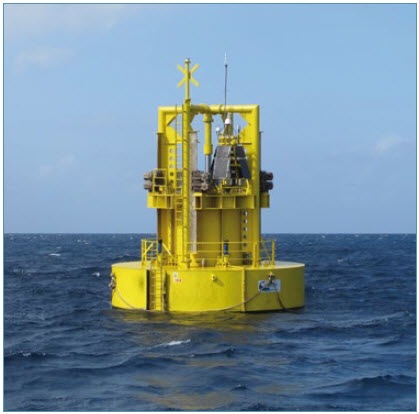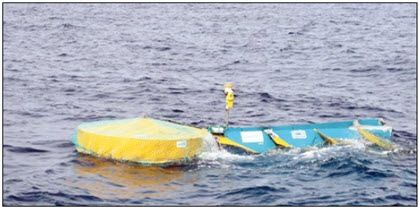SPAIN
TECHNOLOGY DEMONSTRATION
|
OPERATIONAL PROJECTS
|
 Wedge Global W1 prototype |
|
|
The Finnish company WELLO installed the PENGUIN II prototype in September 2015. The objective of this first experiment is to test the structural reliability of a 6m length and 2,4m width device constructed in Finland and assembled at the Taliarte harbour close to PLOCAN headquarters. The testing phase will be extended through 2016. |
 PENGUIN II device |
PLANNED DEPLOYMENTS
OCEANTEC plans to install a low power prototype of its floating oscillating column water wave energy converter connected to the grid at bimep in mid-2016.
The Magallanes project was launched in 2007 setting out to develop a technology capable of extracting energy from tidal currents. The project is in the final stage of assembly and construction of a real scale prototype, 350 tons of weight. Sea trials are expected in 2016. Following a research and development stage, in 2014 Magallanes built and tested a 1:10 scale model, successfully completing official testing at EMEC in Scotland. The technology is based on a floating structure without requiring constructions or pillars in the marine bottom. The project is based on achieving the most efficient, profitable method possible to obtain tidal energy: a sturdily-built, simple installation, capable of producing in any area in the world, with the easiest maintenance system.



